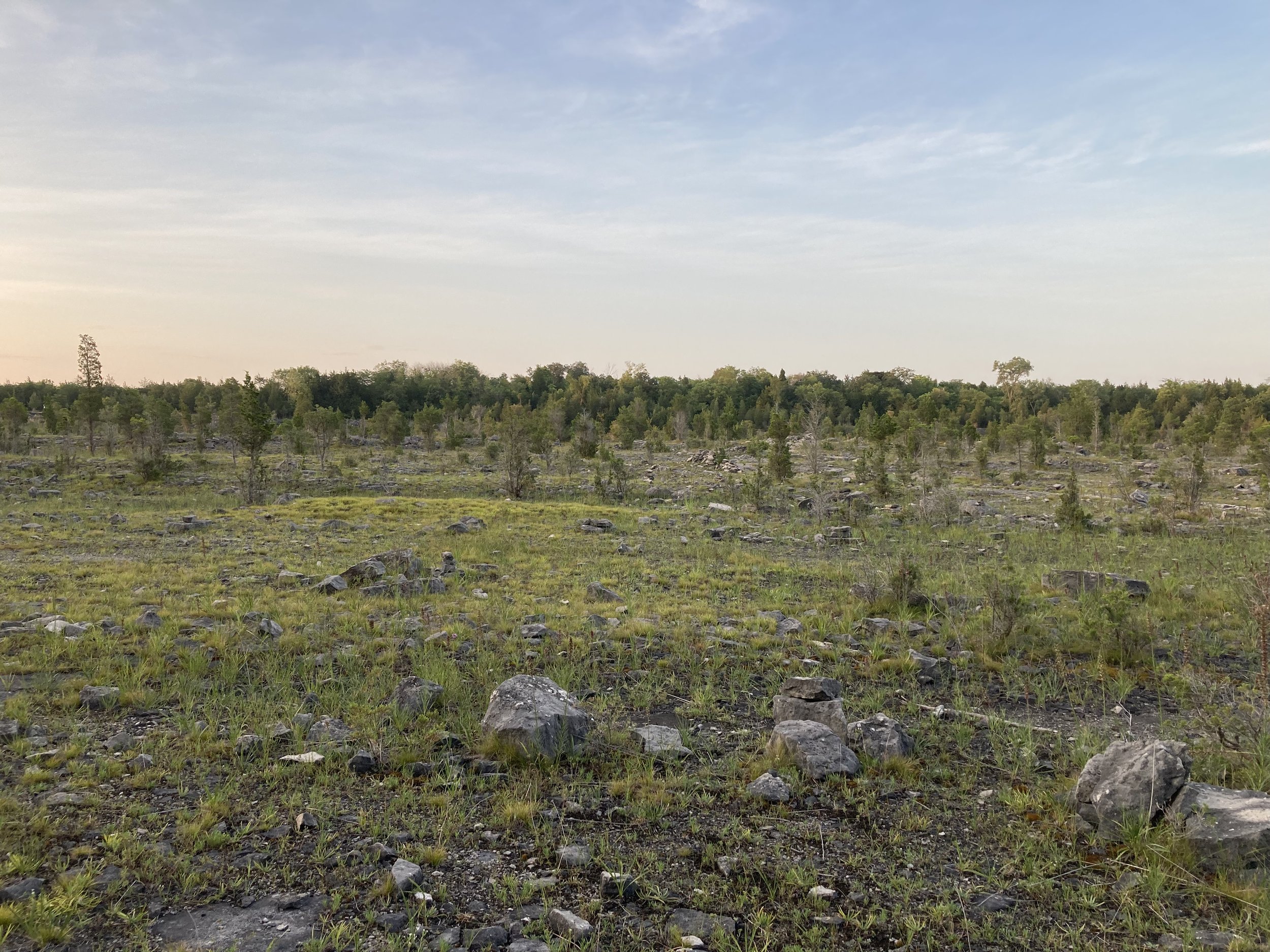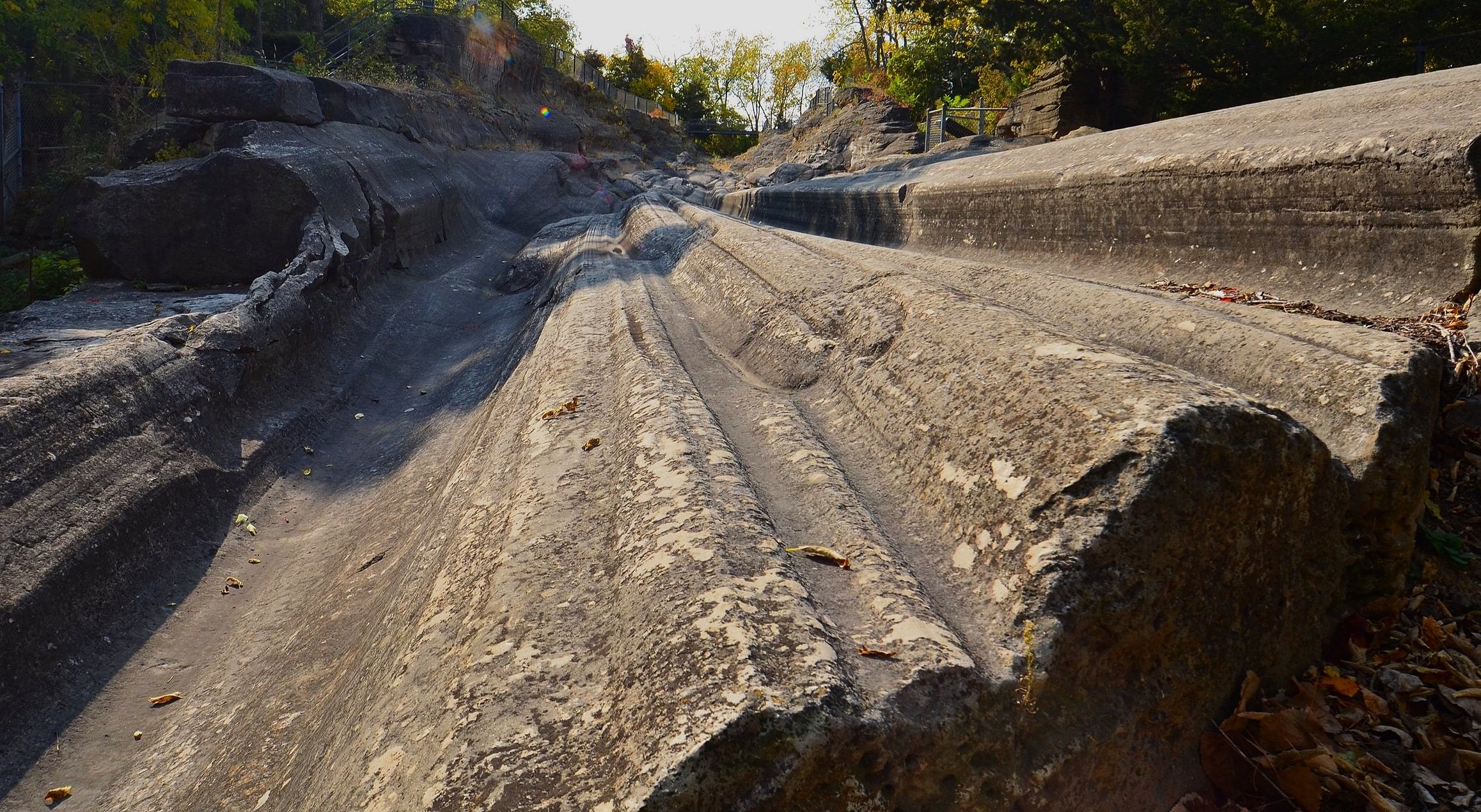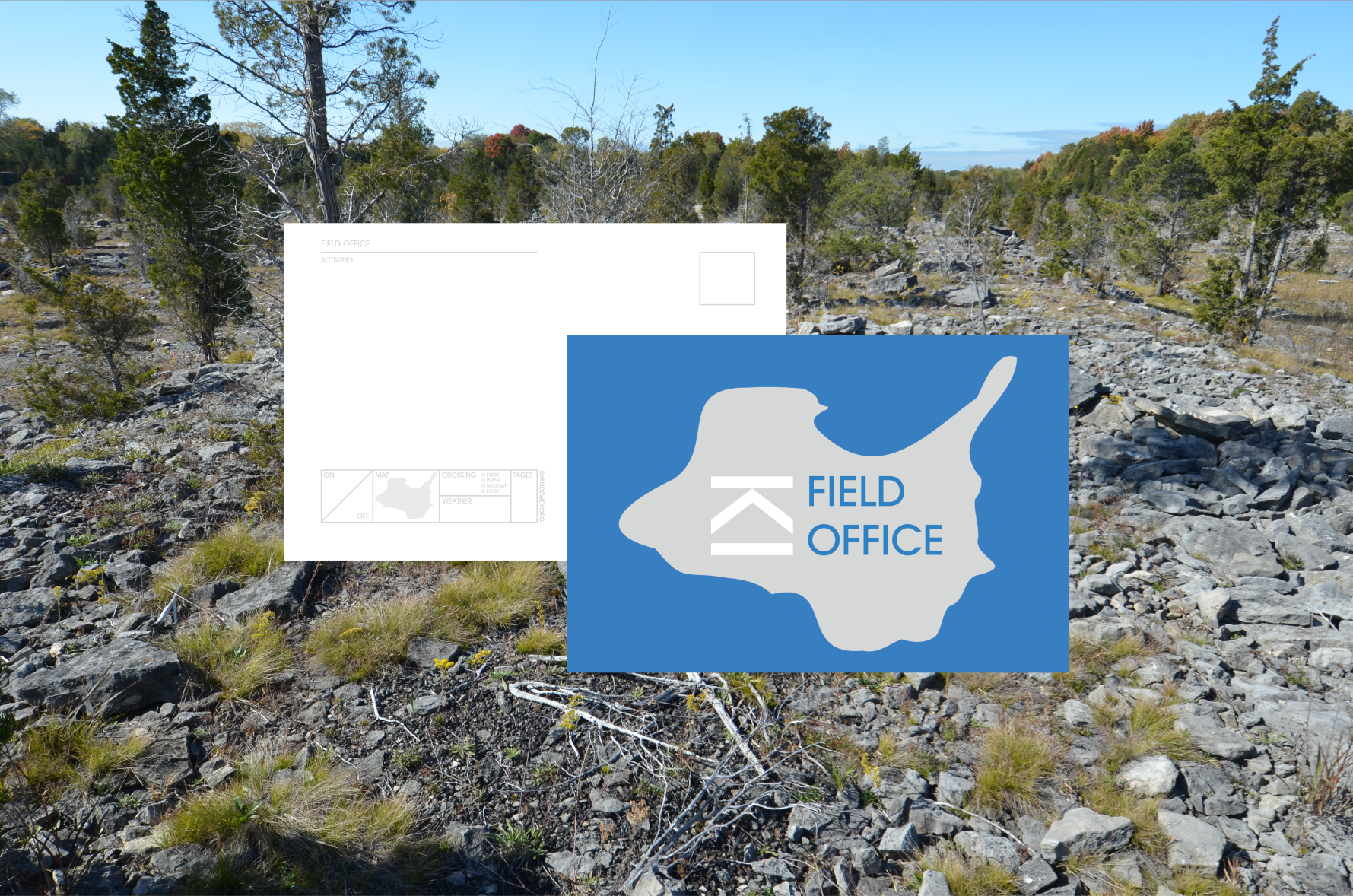
closely observing, engaging & interpreting the interglacial ecologies & glacial landscapes on Kelleys Island
a landscape observatory focused on the past, present, and future role of glaciers in the Great Lakes region.
WHY KELLEYS ISLAND?
Past glaciation created the geographic conditions that defined the types of settlement, industrialization, and present-day reality of the people who live in the Great Lakes region. Kelleys Island is a scale-model ecology with a complex, entangled history.
-
The Great Lakes sit in a regional bedrock basin that formed when Silurian marine sediments turned to limestone and dolomite during the Devonian period. This basin cups toward the edges, and Kelleys Island surfaces on the western edge of Lake Erie.
-
With these bedrock conditions, red cedar (Juniperus virginiana) thrived before the island was deforested to fuel a rising steamship industry that connected the Great Lakes interior with the Atlantic via the St. Lawrence Seaway.
-
The limestone soils covering the island were ideal for growing grapes and vineyards blanketed the former forest floors. Most of the vineyards have been reforested, but several wineries can be found on the island.
-
The limestone quarries on Kelleys Island covered nearly 30% of the 3,000-acre island, and at one point the island was the largest producer of limestone in the world. The limestone removed by quarrying is rumored to have been deeply grooved from past glacial activity. Today, 400 feet of those grooves remain as a preserve. This tortuous ravine of grooves is evidence of the power of the ice sheets during the Pleistocene. These grooves stand as the finest example in the world of glacial grooves carved by continental glaciers.
-
Stones moved by glaciers from one place to another are called erratics. Kelleys Island is all limestone, but there are hundreds of granite boulders strewn across this bedrock, all tracing the past strength of the glacier that shaped this island landscape.
-
Of the 36 islands in Lake Erie, Kelleys is the second largest island with a total area of 4.41 square miles (11.41 km2), and a population of 312. The limestone geography supports one of the few Great Lakes Alvar environments with plant life that thrives on the thin limestone soils of the island. It’s also a site perfect for thinking about geologic time scales and our relationship to deep time.
WHY OBSERVE?
The primary activity of FIELD OFFICE is to seek out the traces of glacial activity in the Great Lakes region and to tell a story about what I encounter. I accomplish this by visiting landscapes, observing, drawing, mapping, photographing, and analyzing the geophysical, ecological and social traces of glaciers in that landscape to compare it to other landscapes in the same region.
This research informs my studio practice on the mainland as I produce work related to what I have seen and how I felt in those landscapes. I build hand tools that replicate the behaviors of glaciers on a smaller human scale in my workshop. I play with the possibilities of these processes at a landscape scale. And with some projects I attempt to bridge across time to connect ice ages of the deep past with ice ages of the deep future.

the quiet landscape of Kelleys Island provides a crisp view of a post-glacial ecology. perfect for contemplating glaciers, their past activity shaping the land, and their absence.
i’ll report back with monthly updates of what I find.
PROJECT ARCHIVES
I produce a postcard for FIELD OFFICE that becomes my timecard for clocking in and out while also logging the details of my activities each time I visit the island.
These cards are mailed from Kelleys Island in duplicate to the archive for my project which is housed at the Center for Art + Environment at the Nevada Museum of Art, and to my studio on the mainland for my record.
I’ve also begun to send these postcards to project sponsors. The collection of hand-written postcards is a kind of artist book that commemorates my practice, dispatched in installments, telling the story as it is unfolding. Become a project sponsor and receive postcards from FIELD OFFICE.

FAQs
-
FIELD OFFICE is an ongoing project where I visit sites of glacial significance in the Great Lakes region and I observe, engage, and interpret the landscape. Currently on Kelleys Island.
-
No. But if you have one you want to let me use, just let me know. I’ll take anything: slots in your vacation rental, squatter’s rights in your tool shed, old barns, the back room in your winery, etc.
-
I’ll share stories from the field on the updates page, on social media, and through commemorative postcards that I mail from the island to people who financially support my practice. If you’d like to start receiving postcards from me, you can sign up by visiting the FIELD OFFICE store.
-
I do not live on Kelleys Island, but I visit the island monthly as a tourist and friend of the island. Having lived on several islands (including Oahu, England, and Papua New Guinea), I have respect for the people who do call the island home.
-
I’m happy to discuss giving an interpretive talk about my work and ecology of the Great Lakes. Please reach out through my contact page. I’ve spoken about the Great Lakes ecology at Cleveland’s Museum of Contemporary Art (MoCA, 2018), the Cleveland Institute of Art (2019), The Sculpture Center (2019), Kent State’s Cleveland Urban Design Collaborative (2017), The Institute for Land and Environmental Art (Switzerland, 2020), and University of Southern California’s School of Architecture (2021).
-
Thank you for supporting this project! You can support FIELD OFFICE projects with a financial contribution, or purchase of commemorative items from the FIELD OFFICE store.
BIO
RYAN DEWEY works in sculpture, research, and land art, looking at connections between people, places, and land use to produce a kind of ecological dreaming. Donna Haraway has called his work one of her favorite examples of art about the anthropocene in her book Staying With The Trouble. His archive is housed at the Center for Art + Environment at the Nevada Museum of Art. He has lived on several islands, in several jungles, in one desert, on one mountain, and on two of the five Great Lakes. He is a member of the American Society of Polar Philatelists and has received residencies at ACRE (Chicago), the Alps Art Academy (Switzerland), and the Montello Foundation (Nevada), as well as serving two appointments as visiting researcher in cognitive science at Case Western Reserve University where he wrote the open-access book Hack the Experience: New Tools for Artists from Cognitive Science (Punctum Books, 2018).



